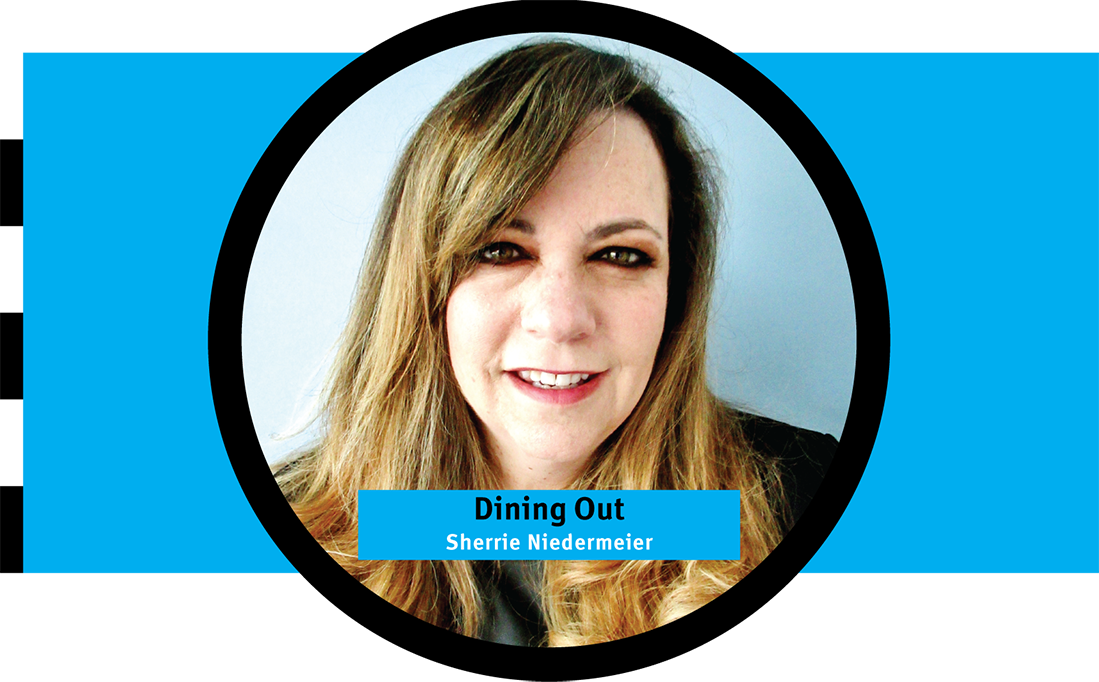Chanukah comes at what has become an increasingly hectic time of year. It’s usually a time when so many things are happening all at once; the school semester is ending, year-end projects at work are coming to a crescendo, and we’re trying to find time to somehow get our shopping finished. We are short on daylight and often short on energy. It is a bit of a relief that Chanukah doesn’t begin until Dec. 25 this year. It feels like it gives us a bit more of that precious thing so many of us crave — time!
The focus of this holiday for many of us can lean toward the more superficial things like eight days of gifts, candles and fried foods. But it’s the perfect time of year to reflect on the messages of the Chanukah story — victory and miracles. We can all use a victory or a miracle from time to time, can’t we? Maybe you made a major life change this year, like a new home or new job. Or maybe you finally got around to that project you’d been putting off for months. Anything you can look to that makes you stand back and think, “Yes, that made things a little (or a lot) better” is something for which it’s worth being grateful. This Chanukah as you light each new candle, take a minute to celebrate your victories and miracles, however large or small they may be.
I want to share with you some recipes that may help you achieve what could be another small victory — celebrating Chanukah without making the whole house smell like oil! Nothing replaces a good latke or jelly doughnut, but if you regularly make those, I’ll bet you already have tried-and-true recipes (maybe some handed down through your family) and you’re not looking for new versions. Rather than focus on those traditional foods, I’ll share with you some other options that fit the “oil” and “frying” themes of the season and may help you cut back a bit on some of the overly greasy foods (and that smell!) These are a couple of favorites we make in our home all year long:
Oven-Fried Eggplant – makes about 12 slices
(This can be served as a side dish or as the base for a quick Eggplant Parmesan)
Ingredients:
1 medium to large eggplant (about 1 1/2 pounds), peeled and sliced into 1/2-inch-thick round slices
Salt
1/3 cup all-purpose flour
2 eggs, beaten
3/4 cup Italian-style breadcrumbs
1-2 tablespoons olive oil
Optional ingredients for Eggplant Parmesan:
Approximately 24 ounces of your favorite marinara sauce
1 pound mozzarella, thinly sliced
1/4 cup grated Parmesan cheese
1/4 cup torn basil leaves
Sweat the eggplant by sprinkling both sides of the slices with salt, then let them sit at room temperature for 1 hour. This helps remove excess moisture so they crisp up nicely.
Pat the eggplant dry with paper towels so the breadcrumb mixture will stick evenly.
Preheat oven to 450 degrees. Once the oven is up to temperature, heat a large sheet pan in the oven for 10 minutes while you gather the other ingredients. Line up three shallow dishes; fill one with the flour, one with the beaten eggs and one with the breadcrumbs. Remove the sheet pan from the oven and brush it thoroughly with the olive oil. Now work quickly while the pan is hot — dredge an eggplant slice in the flour and tap off any excess. Then dip in the egg, then in the breadcrumbs, coating evenly as you dip. Place on the heated sheet pan and repeat with the other slices, keeping them in a single layer and not overlapping.
Bake until the undersides are crisp and brown, about 8-10 minutes, and then flip the slices and continue baking until they are golden on the other side, another 8-10 minutes.
Serve as is, or for Eggplant Parmesan, top each piece of eggplant with a generous spoonful of marinara sauce, a slice of mozzarella and a sprinkle of grated Parmesan cheese. Return the pan to the oven and bake until the cheese melts and browns and the sauce is bubbly, about 20 minutes. Top with the basil before serving.
Lebanese Salad Dressing – makes about 1/4 cup
(This is a favorite of my stepmother’s family. It can be used on just about any vegetable salad or tossed salad. I especially like it on a simple tomato and cucumber salad.)
Ingredients:
1 clove garlic, roughly chopped
1 teaspoon salt
1 teaspoon dried mint leaves
1 tablespoon olive oil
1 tablespoon vegetable oil
1 tablespoon lemon juice
Use a mortar and pestle (or as an alternative, a small bowl and the back of a metal spoon) to thoroughly smash the garlic, salt and mint into a paste. Transfer to a small bottle or jar (something with a lid), add the oils and lemon juice. Shake and pour over your favorite salads.
As I mentioned, nothing replaces a good latke or jelly doughnut. But are you familiar with the tradition of having dairy or eating cheese during Chanukah? I recently heard about a legend sometimes associated with Chanukah that I’d never heard before. This story takes place before the time of the more widely known miracle of the oil. It’s the tale of a Jewish heroine, Judith, and involves cheese. It’s interesting, and appropriately, food is a key piece of the legend.
As the story goes, Judith lived in a town named Bethulia, which was in great danger of being conquered by King Nebuchadnezzar. The king’s head general, Holofernes, and thousands of his men were camped outside the city, cutting off supplies to the townspeople. The Jews resisted the takeover, but their situation was becoming more and more desperate as time went by. Judith, said to be a wise and beautiful woman, constructed a scheme to save them. She went to meet with Holofernes to trick him into thinking the Jews were going to surrender. She cleverly brought salty foods with her to share with the general to make him thirsty, one of which was cheese. The cheese was the key: the general ate, became very thirsty, drank too much wine and passed out. This gave Judith the opportunity to take his sword, cut off his head, and take it with her as she snuck back to Bethulia. Finding his beheaded body sent the Holofernes’s men into chaos, and seeing his severed head inspired the Jews to seize the opportunity to attack. The Jews were victorious because of Judith and her clever, cheesy scheme.
In some versions of this story, the cheese Judith carried with her was cooked into a pancake, so there is speculation this was a precursor to the potato latkes we eat today. Maybe Judith’s pancakes were like Cassola, a cheese pancake commonly eaten in Italy that was introduced there by the Jews, possibly as early as the 16th century. Over time, it became somewhat of an unofficial Italian Christmas food. The name can refer to everything from a small pancake-sized item to something larger that would be comparable to a cheesecake. Here is a recipe for the smaller version with options for sweet and savory:
Cassola (Sweet Cheese Pancake) – makes about 15 pancakes
Ingredients:
1 cup ricotta
3/4 cup plus 1 tablespoon all-purpose flour
3 large eggs
2 tablespoons white sugar
1 teaspoon salt
1/2 teaspoon baking powder
2 tablespoons fresh lemon juice
Zest of 1 lemon
Oil for frying
Optional toppings: honey, jam, sour cream, maple syrup, yogurt
Combine all ingredients except the oil in a food processor. Process for 5 to 10 seconds, stop to scrape the sides, then process another 5-10 seconds. Repeat this process 1 or 2 more times until the mixture forms a smooth batter.
Lightly coat or spray a skillet or griddle with cooking oil and heat to medium-low. Use a spoon to scoop up about 2 tablespoons of batter, then drop into the hot skillet. They should be small, about the size of silver dollar pancakes. Spread the batter out into a thin circle as soon as it hits the skillet.
Fry for 2-3 minutes on each side until golden brown (not dark).
Serve immediately with toppings of your choice.
Savory version (follow same cooking instructions) –
Ingredients:
1 cup flavored cream cheese (I like chive and onion)
3/4 cup plus 1 tablespoon all-purpose flour
3 large eggs
1/2 teaspoon baking powder
Oil for frying
Optional topping: sour cream
the story of Judith and add a little cheese to your Chanukah menu. Consider melting shredded cheddar on top of your potato latkes. Or, for a very simple appetizer, drizzle honey over plain goat cheese and serve it with fresh strawberries. If you like things that are a little spicier, try filling Peppadew peppers with cream cheese.
Friends, I am excited to share this first column with you and look forward to sharing many more stories and recipes. Let me know if you try any of the recipes here. I’d love to know what you think or if you added any special touches of your own. I wish you and yours a happy, healthy, and delicious year full of victories and miracles. Happy Chanukah from my kitchen to yours!




